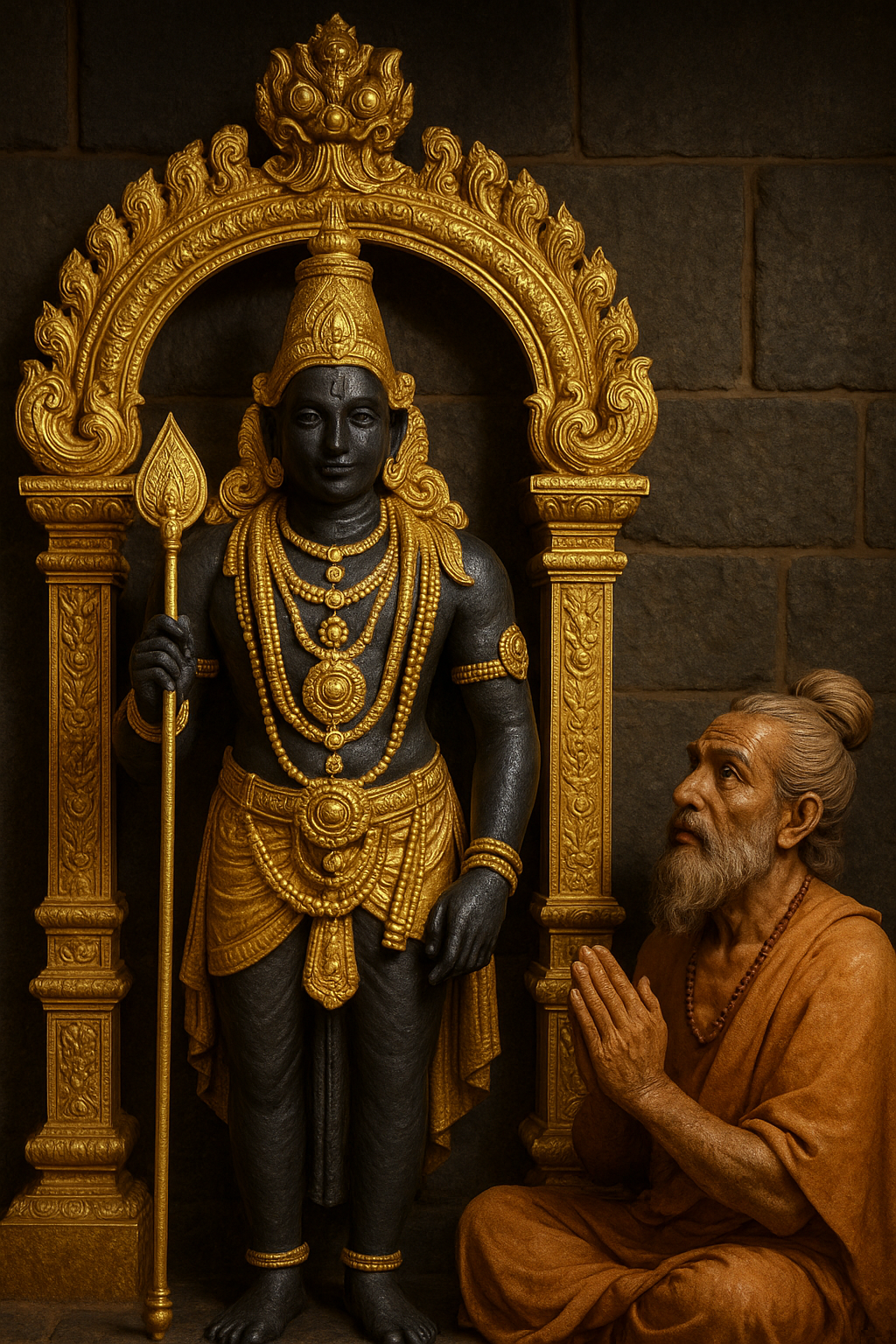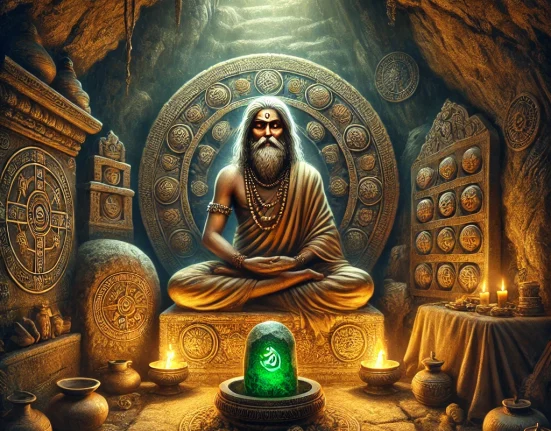Living Legend of Palani
High atop the sacred Palani Hills in Tamil Nadu stands a statue that has captivated the imagination of millions — the Navapashanam idol of Lord Murugan. Unlike any other deity in the Hindu pantheon, this idol is not carved from stone or cast in metal, but is a product of ancient alchemical mastery, spiritual vision, and a quest for healing that transcends time. For devotees, seekers, and scholars alike, the Palani Murugar statue is more than a religious icon; it is a living testament to the genius of Bogar Siddhar, the legendary sage and one of the 18 Siddhars, whose life and work continue to inspire awe and inquiry.
Table of Contents
- Who Was Bogar Siddhar?
- The Creation of the Navapashanam Idol: A Lost Science
- The Nine Poisons: Ingredients and Preparation
- Rituals, Healing, and the Power of Faith
- Scientific Perspectives and Skepticism
- Controversies, Preservation, and Modern Challenges
- The Enduring Legacy of the Navapashanam Idol
- Conclusion: Faith, Mystery, and the Future
Who Was Bogar Siddhar?
A Sage Beyond Time
Bogar Siddhar, revered as one of the 18 Siddhars, is a figure shrouded in legend and historical intrigue. Said to have lived around 3000 BCE, Bogar was a master of Siddha alchemy, yoga, and spiritual science. His guru, Kalanginathar, is often referred to as his spiritual father in his poems, and Bogar’s own writings, especially the famed Bogar 7000, detail his deep knowledge of medicine, alchemy, and enlightenment.
Bogar’s life was marked by extraordinary achievements: he is credited with introducing Siddha science to China, possibly under the name Lao Tse, and is said to have traveled using advanced technologies described in his texts. His devotion to Lord Murugan and his quest to create a universal medicine led to the creation of the Navapashanam idol.
“The mind is the gateway to the divine. Through self-reflection and meditation, one can transcend the illusion of separateness and experience unity with the cosmic consciousness.”
— Bogar Siddhar
The Creation of the Navapashanam Idol: A Lost Science
The Divine Commission
According to legend, Lord Murugan appeared to Bogar in a vision, instructing him to create an idol that would not only embody divinity but also serve as a universal medicine. Bogar, with the assistance of 81 Upa Siddhars, embarked on a monumental task: to blend 4448 herbs and minerals into 81 pashanas (compounds), which were then combined into nine potent mixtures — the Navapashanam.
The Process: Complexity and Precision
The preparation of Navapashanam was a feat of both science and spirituality:
- Nine Poisons (Navapashanam): Each mixture was made from a blend of minerals and herbs, many of which are considered toxic in isolation.
- Multiple Stages: The process involved heating the mixtures with nine different fuels, filtering them through nine unique filters, and burying the substrates deep underground for a precise period.
- Spiritual Empowerment: The final idol was energized with sacred mantras and rituals, believed to transform the toxic elements into a healing elixir.
Any deviation in this process, it is said, could result in a dangerous outcome, underscoring the precision and spiritual discipline required.
The Nine Poisons: Ingredients and Preparation
The Alchemical Formula
The nine key ingredients of Navapashanam, as described in ancient texts and modern research, are:
| Tamil Name | English/Chemical Name | Purification Method (Traditional) |
|---|---|---|
| Veeram | Mercuric Chloride | Soaked in cow’s milk, sun-dried |
| Pooram | Mercury Subchloride | Boiled with pepper-betel solution |
| Jathilingam | Red Sulphide of Mercury | Heated with lime juice, milk, Acalypha |
| Rasam | Mercury Metal | Ground with brick powder, turmeric, etc. |
| Vellai Pashanam | Arsenic Trioxide | Scrubbed with betel leaf, lemon juice |
| Gauri Pashanam | Arsenic Pentasulfide | Heated with ghee |
| Mridharsinghi | Lead Monoxide | Boiled with goat urine |
| Kandhagam | Raw Sulphur | Sun-dried, scrubbed with milk |
| Shilajit | Mineral Pitch | (Traditional purification) |
Each ingredient underwent elaborate purification to neutralize toxicity, reflecting the Siddha tradition’s mastery over both chemistry and spiritual energy.
Rituals, Healing, and the Power of Faith
Abhishekam: The Ritual Bath
The daily abhishekam (ritual bathing) of the idol with milk, Panchamirtham (a sacred fruit mixture), sandalwood paste, and other substances is central to the temple’s practice. Devotees believe that as these liquids flow over the Navapashanam idol, they absorb its medicinal and spiritual properties, transforming into a prasadam (sacred offering) with healing powers.
Real-Life Testimonies
Many devotees claim miraculous recoveries from chronic illnesses after consuming the abhishekam water or applying the sandalwood paste left overnight on the idol. These stories, passed down through generations, have made Palani a pilgrimage site for those seeking both spiritual and physical healing.
“The overnight sandal paste in particular is a wonder drug, a panacea for many incurable diseases. Not even the rationalist can say that the abhishekam is a waste. For every drop of it is consumed with profit and pleasure by devotees, far and near.”
— Palani Temple Publication
Scientific Perspectives and Skepticism
The Search for Evidence
Despite the widespread belief in the idol’s healing powers, scientific analysis has struggled to validate these claims. In the 1980s, a government-appointed committee attempted to analyze the idol’s composition and the abhishekam substances. While devotees believed the idol’s materials imparted medicinal qualities, scientific tests on sandalwood paste left overnight on the idol showed no detectable trace elements using atomic absorption spectrophotometry.
Hypotheses and Limitations
One hypothesis suggested that the idol might act as a reservoir for beneficial bacteria, which could be transferred to the abhishekam materials. However, the lack of conclusive scientific evidence means that the healing properties remain a matter of faith rather than empirical proof.
“It was revealed to us as a stupendous moral — that even modern scientific analysis cannot penetrate the Divine Structure.”
— M.S. Saravanan, Scientific Committee Member
Controversies, Preservation, and Modern Challenges
Preservation Issues
Centuries of ritual bathing have eroded parts of the idol, especially below the neck, leading to concerns about its structural integrity. Proposals to replace or encase the idol have sparked public outcry, as devotees view the original as irreplaceable and divinely empowered.
Allegations and Legal Battles
The idol’s unique composition and the belief in its healing powers have made it a target for theft, fraud, and controversy. Attempts to replace the idol with replicas, allegations of scraping and selling its material, and disputes over temple administration have all made headlines in recent years.
The Enduring Legacy of the Navapashanam Idol
Spiritual and Cultural Impact
The Palani Murugar statue stands as a symbol of the fusion of science, spirituality, and devotion. It continues to draw millions of pilgrims, healers, and researchers, each seeking a glimpse of the mystery that is Navapashanam.
Bogar’s Timeless Wisdom
Bogar’s teachings, preserved in texts like Bogar 7000, emphasize not only external alchemy but also inner transformation — the purification of mind and spirit as the true path to enlightenment.
“True alchemy is the transmutation of the mind. Just as lead is transformed into gold, the mind can be purified and elevated to attain enlightenment.”
— Bogar Siddhar
Conclusion: Faith, Mystery, and the Future
The Navapashanam idol of Palani is a marvel that defies easy explanation. Whether viewed as a product of ancient science, a vessel of divine energy, or a symbol of unwavering faith, it continues to inspire wonder and devotion. While modern science may not yet unravel all its secrets, the idol’s legacy endures — as a healer, a mystery, and a bridge between the material and the spiritual.
For those drawn to the mysteries of Hinduism, Murugan, Bogar, the Siddha tradition, and the enigmatic power of Navapashanam, the Palani Murugar statue remains a beacon of hope, healing, and transcendence.
Table: Key Facts about the Navapashanam Idol
| Aspect | Details |
|---|---|
| Creator | Bogar Siddhar (one of the 18 Siddhars) |
| Date | Estimated 3000 BCE (legendary) |
| Main Ingredients | Nine “poisons” (minerals/herbs): Veeram, Pooram, Jathilingam, Rasam, Vellai Pashanam, Gauri Pashanam, Mridharsinghi, Kandhagam, Shilajit. |
| Rituals | Daily abhishekam with milk, Panchamirtham, sandalwood paste, etc. |
| Believed Benefits | Healing of diseases, spiritual elevation, purification |
| Scientific Evidence | Inconclusive; no detectable medicinal elements in abhishekam substances |
| Controversies | Idol erosion, replacement attempts, theft, legal disputes |
| Cultural Significance | Major pilgrimage site, symbol of Siddha alchemy and Tamil spiritual heritage |
Addressing Counterarguments and Alternative Perspectives
While the healing claims of the Navapashanam idol are not substantiated by modern science, the power of faith, ritual, and community cannot be underestimated. The idol’s significance lies as much in its ability to inspire hope and unity as in any purported medicinal effect. Skeptics may point to the lack of empirical evidence, but for devotees, the lived experience of healing and transformation is proof enough.
Final Thoughts
The story of the Palani Murugar statue is a tapestry woven from history, legend, science, and faith. It invites us to explore not only the mysteries of the past but also the possibilities of the present and future — where ancient wisdom and modern inquiry can coexist, challenge, and enrich one another.



Leave feedback about this